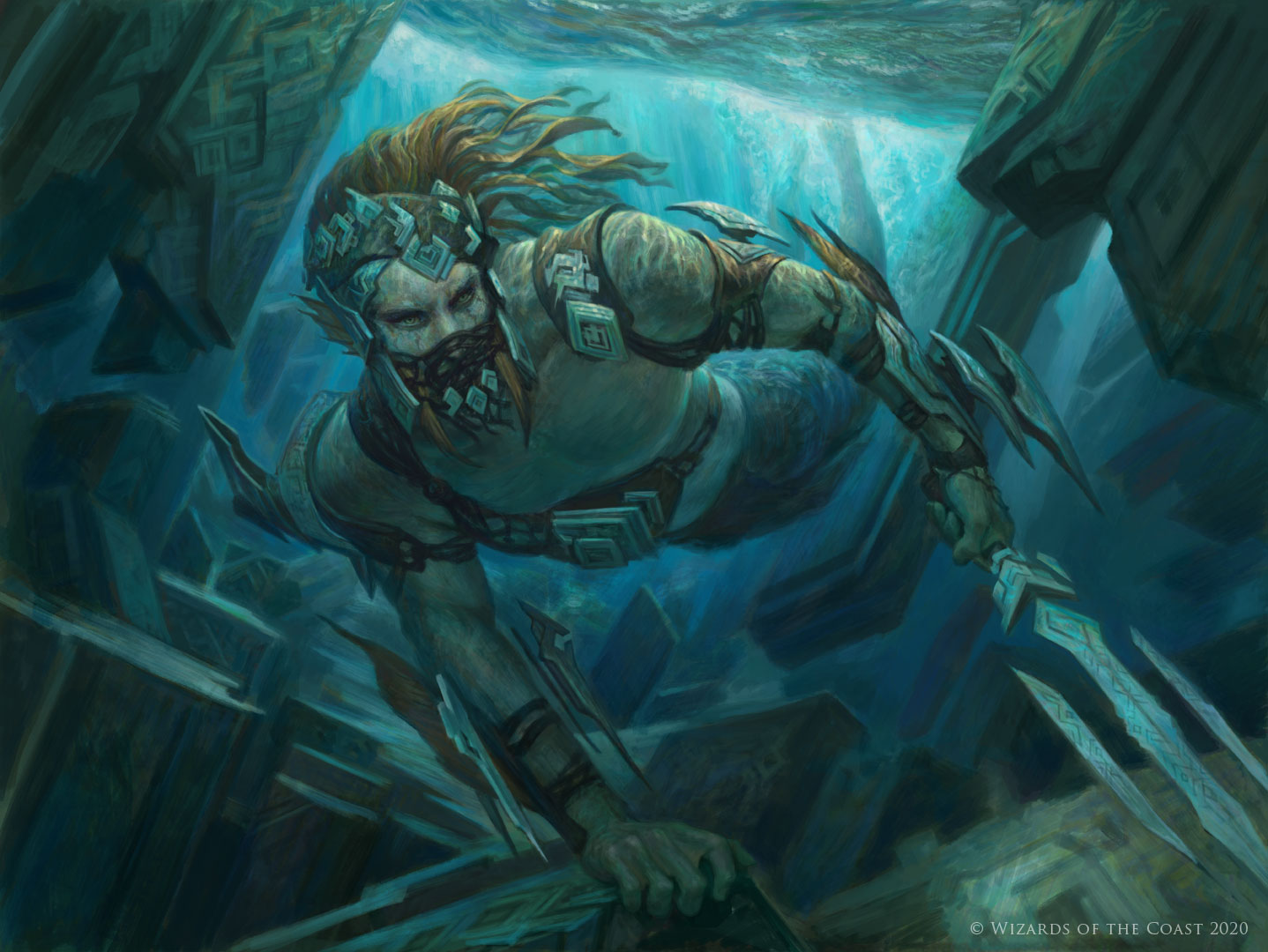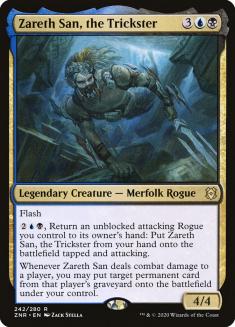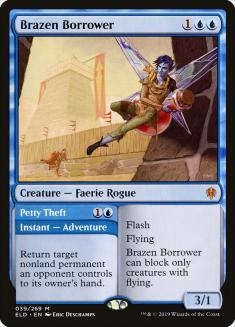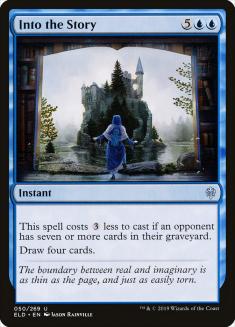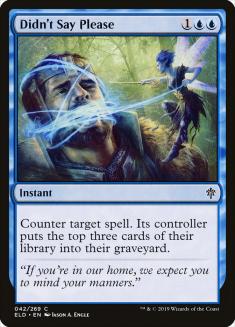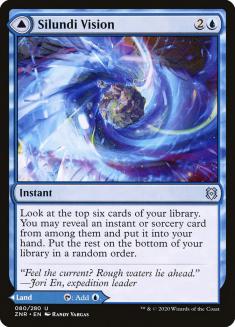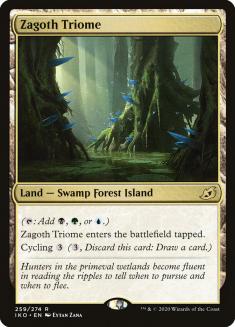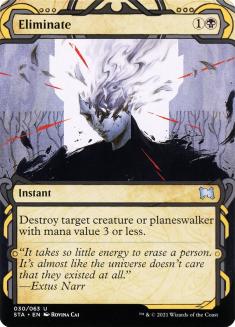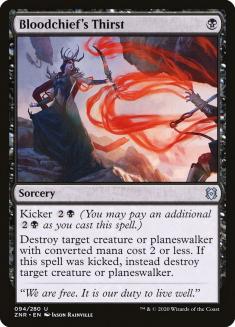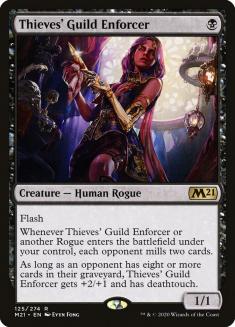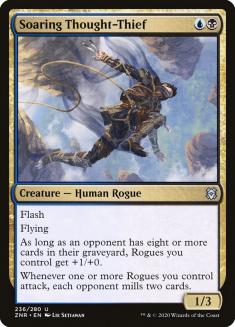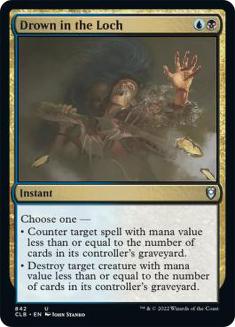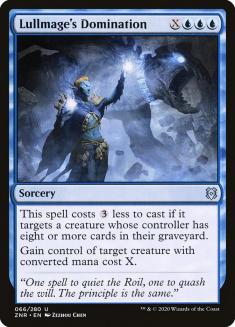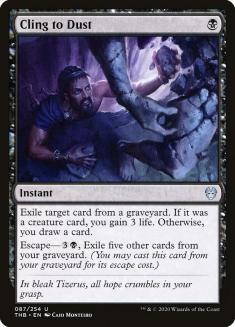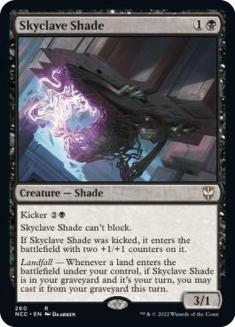The MPL Split is a very weird tournament. Since it’s double round robin, meaning the entire MPL will play against each other twice, I knew exactly who my eleven opponents would be this past weekend, so I could predict somewhat what my personal metagame was going to be. However, each of these eleven people has an entirely unique metagame to prepare for, which might influence their choices. For example, I didn’t believe I would play any person playing a Ramp deck this past weekend, so for my personal metagame any Ramp strategy might as well not exist, but one of my opponents might be preparing for a metagame with 20% Ramp decks.
The fact that there are also several big teams also plays a real role in what can happen to a person’s tournament. For example, this weekend I’m playing against four people who are testing together; I’m predicting 0% Ramp this weekend, but if this team decides to play it, all of a sudden it’s 35% of the field! This means that a strategy that gambles on a particular deck not being present might pay off in spades or backfire spectacularly, which is unlikely to happen in a bigger tournament where a deck will range from 7% to 12% of the field but never from 0% to 35%.
Because of all these factors, I made a somewhat puzzling deck choice, at least to me — Dimir Rogues. It’s puzzling because, for October’s Zendikar Rising League Weekend, when the “deck to beat” was Azorius Blink (Yorion), I chose not to play Dimir Rogues, and now that that deck is Gruul Adventures, I’m choosing to play it. Alas, it’s what I thought would be best against the specific metagame I expected.
A couple of weeks ago, Dimir Rogues emerged as the natural foil to Yorion decks. As the metagame progressed and all Yorion variants were pushed away, the expectation would be that the deck would lose popularity, but this is not what actually happened. It turns out that Dimir Rogues is simply a good deck and not a specific metagame call. Sure, you’d like to play against Yorion decks if possible, but the strategy is just powerful and, outside of specific Rakdos builds, I don’t think there’s anything you particularly fear.
After the MPL split, there were three main variants of Dimir Rogues decks that showed up — the Shark Typhoon version, the Ruin Crab version, and the Zareth San, the Trickster version.
Creatures (8)
Lands (24)
Spells (28)

Creatures (15)
Lands (22)
Spells (23)
- 1 Essence Scatter
- 4 Into the Story
- 4 Drown in the Loch
- 1 Cling to Dust
- 2 Heartless Act
- 4 Bloodchief's Thirst
- 4 Lullmage's Domination
- 3 Agadeem's Awakening
Sideboard

Creatures (14)
- 2 Gadwick, the Wizened
- 2 Brazen Borrower
- 4 Thieves' Guild Enforcer
- 2 Zareth San, the Trickster
- 4 Soaring Thought-Thief
Lands (24)
Spells (22)

In my mind, your choice is basically between Lurrus of the Dream-Den and the Brazen Borrower / Zareth San, the Trickster combo. Therefore, I don’t really understand the Shark Typhoon version — I think that, if I’m going to give up a card that’s as powerful as Lurrus, I want a lot more than just Shark Typhoon to make up for it. Given that it seems to be the worst of both worlds to me, I’m going to discard it.
I think the Ruin Crab version is the most powerful in an unprepared field. When that deck is firing on all cylinders, it feels like you’re playing Legacy while your opponents are playing Standard. It’s also the easiest to deck them with, which comes up against a lot of slow strategies (such as 60-card Yorion) and even faster decks from time to time.
However, of all the versions, it’s the most vulnerable to hate cards — you can’t help but aggressively mill them and if everybody is playing cards like Ox of Agonas or Kroxa, Titan of Death’s Hunger, you will suffer a bit for it. It also sometimes struggles against a pile of answers, since you have some cards that are individually weak such as Ruin Crab and Merfolk Windrider, so if they deal with your payoffs you might just be down a couple of cards.
The Zareth San version is also one that gives up Lurrus, but in return it gets Zareth San, which I think is a powerhouse right now. I think it’s the best version against hate, but it’s not as good against unprepared opponents and not as good in the mirrors.
I believe that, right now, people are playing a very high number of Ox of Agonas — it’s the best card in Gruul Adventures for this matchup and I’ve seen it in maindecks, but I’ve also seen it even in Ramp builds. Therefore, my choice leans more towards the Zareth San version. My deck is not an exact replica of Stan Cifka’s, though as I made a couple of changes. Here’s the list I played in this weekend’s MPL Split:
Creatures (14)
Lands (23)
Spells (23)

Some noteworthy card choices:
My deck leans even more heavily towards Zareth San than Stan’s build — in fact, I’m still undecided between three or four copies. It’s an expensive legendary creature, so I’m stuck with three at the moment, but it would not surprise me if four was correct; it’s really an absurdly strong card in today’s metagame and it lets you get around a lot of the hate because you don’t need to play a grindy game where you mill half their library. You need to mill a couple of cards, and then you connect with Zareth San and the game is often over.
All versions of the deck can basically win the game on Turn 4, but this version can do it in two ways: it can aggro them out with a lot of small Rogues, or it can just connect with Zareth San. For example, this is a screenshot of one of my ladder games and it’s not that uncommon an occurrence (though sometimes it’s Vivien, Monsters’ Advocate; sometimes it’s The Great Henge; etc.).
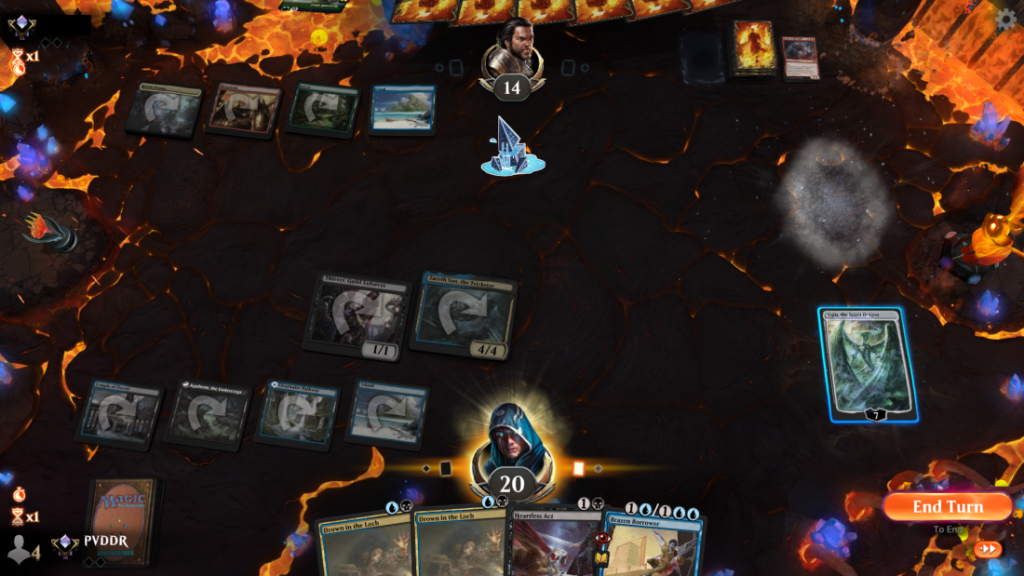
With three Zareth Sans in my deck, I need even more Rogues. Brazen Borrower also happens to be quite good right now. The body isn’t so hot, but Petty Theft can come in handy versus The Great Henge, Embercleave, Lullmage’s Domination, Shark Typhoon, and Doom Foretold.
I love Into the Story and think the Ruin Crab version would actually play six copies if it could, but in this deck you don’t do a very good job of milling your opponent, so sometimes it gets stranded in your hand (plus it’s a much more expensive deck with the Zareth Sans). I toyed with a fourth copy in the sideboard for a while but ultimately decided against it, but if you expect a lot of Yorion decks I think it’s good, as it’s your single best card there.
I don’t like Didn’t Say Please in the Ruin Crab version, since I’m not actually interested in the three-mana counterspell, but I think you need some help with milling your opponent in this deck, and it’s the next-best mill card. This card actually got better though now that most of the Gruul Adventures decks have gone heavier with Viviens and Henges.
I found myself often having mana problems early on, and I wanted to add another mana source, but I didn’t want to flood too much, so I added one Silundi Vision.
Some people play a lot of Fabled Passages, but I think if you don’t have Ruin Crab, Zagoth Triome is better. The deck is very color-intensive — you have Agadeem’s Awakening, Bloodchief’s Thirst, Brazen Borrower, Didn’t Say Please, and Lullmage’s Domination, and you often cast many spells in the same turn, which means you are very taxed on colored sources (and the ability to add both colors is key).
Heartless Act is usually the better card, but I like having access to more ways of killing Scavenging Ooze. Besides that, there are some fringe situations that come up where Heartless Act doesn’t work, such as killing an Escaped Phoenix of Ash or a Vivien, Monsters’ Advocate token (which you cannot Heartless Act since they have ability counters). Because of that, I like a mix of the removal.
Playing the Deck
One very important thing to know about Dimir Rogues is that it’s an incredibly hard deck to play properly — I believe it is without question the hardest deck to play in Zendikar Rising Standard, and if you play it incorrectly it will cost you. I’ve played the deck a fair bit, as it’s a style of deck I really enjoy, and I still make fundamental mistakes every game.
The reasons it’s such a hard deck to play is that, well, it resembles a Legacy deck — everything costs one or two mana, so you often have several options in a turn. Play a deck with Yorion and you’re going to play a tapped land Turn 1, your two-mana card on Turn 2, your three-mana card on Turn 3, etc. Most of your early-game choices are scripted and automatic; you just follow the mana curve of your hand. With Dimir Rogues, you often find yourself in spots where you have four mana on the battlefield and can play twelve different combinations of cards, including simply playing nothing.
On top of that, you have to pay attention to their life total, their graveyard count, their library count, their escape cards, and so on, so that you know which angle to attack from. You often need to decide if you’re going to win by milling or by damage, for example, and the decision sometimes needs to be made very early — if you’ve decided you’re going to win by damage, it could be correct to cast a Soaring Thought-Thief after you attack just so you don’t risk milling an escape card, but if it turns out you’re wrong and the game is going to come down to decking, that decision could be disastrous.
For example, imagine you have the following hand against Selesnya Blink (Yorion) on the play:
You lead with Turn 1 Zagoth Triome and your opponent plays a Forest and passes. You draw Swamp. You play Swamp and pass the turn. Your opponent plays Plains and passes the turn. Which creature do you play?
My answer:
I like this example because it illustrates what I believe is the biggest mistake Dimir Rogues players make — jamming their Rogues without thought (and sometimes their Ruin Crabs in different versions). All your cards are cheap and can be deployed at instant speed, and I believe you should use this fact to be more selective regarding your plays. Don’t just cast a card because you have open mana. This is not how this deck works.
This is even more true in the Zareth San version, because exposing your Rogues to removal can be even more of a disaster — you really want to be able to sneak an attack through against an unsuspecting opponent.
Imagine, for example, the following hand on the play against Gruul Adventures:
With this hand, your plan should be simple — you wait. If you cast Thieves’ Guild Enforcer early on, you expose it to a number of things — Bonecrusher Giant, Scorching Dragonfire, and even Primal Might. Furthermore, your opponent could have Lovestruck Beast tokens, Scavenging Ooze, or Brushfire Elemental that they leave back to block. Instead, your plan should be to do nothing in the first two turns of the game, and then on Turn 3 you Heartless Act your opponent’s three-drop, cast the Enforcer, attack, and cast the Zareth San. I believe that casting your Enforcer on Turn 1 or Turn 2 is a big mistake that might actually cost you this game.
The Matchups
VS Gruul Adventures
I think Gruul Adventures overall is an even matchup — it ranges from slightly favorable to slightly unfavorable depending on their version (for example, some people have two copies of Ox of Agonas maindeck, which makes the matchup worse for you). I think in this matchup, the Zareth San version is favored over the Ruin Crab version because you just steal so many games by connecting with it and their removal is pretty bad at killing it. Prime stealing targets are The Great Henge, Embercleave, Vivien, or really any three-mana creature.
Out:
In:
After sideboarding I believe is where this version gets a big plus, as Zareth San is a gameplan that sort of bypasses their “removal into escape cards” plan. The Ruin Crab version doesn’t have many choices other than just running into it, but here you can sit with Zareth San. Still, I’d say that they usually improve more than you do in Game 2. If you have their exact list, you can change the numbers a little (you can have two Cling to Dust or zero, for example), but this is how I’d sideboard in the dark.
VS Dimir Rogues
I think this is a matchup in which you’re not favored (I believe it’s the only one of the big matchups where having Zareth San is a real downside). Brazen Borrower is suboptimal in the mirror since everything is so cheap, outside of bouncing back something they stole with Lullmage’s Domination, and Zareth San is expensive and doesn’t have anything great to steal (though if they have Shark Typhoon as well then both these cards become a lot better). Decking is actually possible with Ruin Crabs and Lurrus is just an extra card they have, so it’s a bit tough.
Out:
In:
TL;DR: Cut all Rogues and one Into the Story, add the entire sideboard.
Here, sideboarding also depends on their version, but I think the Ruin Crab version is the most common and this is how I like to sideboard versus them. The idea here is that you might both be bringing in similar cards – Skyclave Shade, Cling to Dust – but you’re not going to be milling them and they are going to be milling you. If they’re also not milling you, you have Shark Typhoon to pull ahead. Plus, if they also cut their Rogues, their Lurrus gets worse, and so on. I don’t think this is an ideal plan by any means but I think it’s the best you can do.
VS Esper Doom Foretold (Yorion)
This matchup is not as good as you’d think; of all the Yorion decks, I think this is the hardest. Game 1 is pretty good, but after sideboarding they have a lot of cheap disruption such as Duress and Mystical Dispute on top of instant-speed removal and, most importantly, Elspeth’s Nightmare, which might as well be called Paulo’s Nightmare given how often I lose to it. Not getting randomly hit by Elspeth’s Nightmare should be your top priority, to a point where you should often hold the Rogues in your hand.
I think Ruin Crabs are not very good here, since they can punish you with Dance of the Manse and sideboard Cling to Dust, and you’re unlikely to deck them because they play 80 cards, so I like the Zareth San version more here as well. Common hits include Elspeth Conquers Death, Yorion, Skyclave Apparition, and even Doom Foretold from time to time.
Out:
In:
Cling to Dust isn’t horrible, given that they have Dance of the Manse and their own Cling to Dusts, but I think if they resolve a big Dance you’re likely to lose anyway, so I take it out. If they don’t have Archon of Sun’s Grace, you can take out Heartless Act.
After sideboarding, things get worse for you as they are better at pushing through their big spells, so you might need to take more aggressive lines. I don’t like Skyclave Shade much (even though it’s good versus the card Doom Foretold specifically) since it’s bad versus The Birth of Meletis and a lot of their removal exiles, but it might not be the worst depending on their version.
VS Rakdos Midrange
This is a bad matchup, but it’s much better than with the Ruin Crab version, as you can actually kill them without milling them a lot. They’re used to having all the time in the world to find their escape cards, but Zareth San can kill them a lot more quickly. Unfortunately there isn’t that much to steal, as you don’t keep their best card in Kroxa, Titan of Death’s Hunger, but often just getting Bonecrusher Giant or even Ox of Agonas or Tymaret Calls the Dead can be enough.
Out:
In:
After sideboarding things improve for you, as you get a lot more answers to Kroxa, both resolved and in the graveyard. I think there’s merit to trying Skyclave Shade as a way to go aggressive but I haven’t had much chance to test that yet to convincing results.
VS Temur Ramp
I think this is a pretty good matchup, as you sometimes just snipe something good from them and kill them before they can even cast anything (see my Ugin screenshot above).
Out:
In:
Here, the sideboarding can change a bit depending on the version — I’m assuming Lotus Cobras, but if they don’t have that, then you can take out more removal.
Getting Tricky
Overall, I don’t think Dimir Rogues is necessarily “the answer” to this metagame — if anything, your games are all very close and your margins are very thin. But I do think Dimir Rogues is a powerful deck and I think the Zareth San version is the best version right now. So if, like me, you’re not too keen on playing seven Gruul Adventures mirrors in a row, I urge you to give this deck a try. Be warned though that it is quite tricky to play and you might find yourself losing a lot before you can win with it; once you master it, however, it’s very rewarding, and the concepts you learn with it will be useful throughout the entirety of your Magic career.

